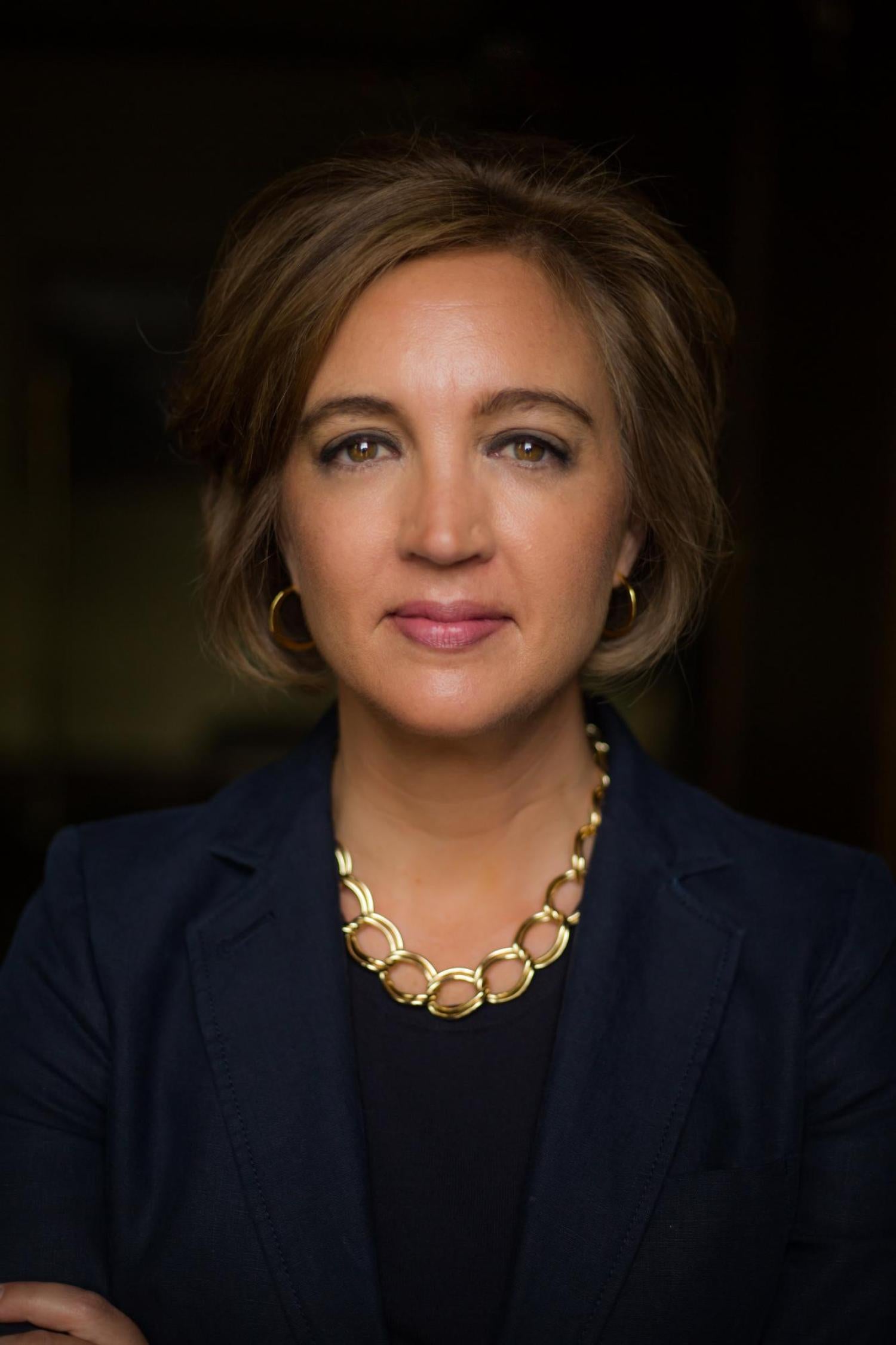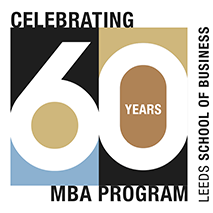Reblog - The Doyenne Project

MBA 2018 candidate Alicia Hines created her own blog called The Doyenne Project. She interviews powerhouse business women that she looks up to and shares this information with us—I highly recommend checking it out! What does “Doyenne” mean? A woman who is the most respected or prominent person in a particular field. With Alicia’s permission, we’re reposting one of our favorite posts so far—an interview with Katica Roy.
KATICA ROY
on gender equity, risk taking, and knowing your value
Katica Roy is an impressive individual.
As the daughter and sister of refugees, she fostered a deep reserve of grit, understanding the importance of always doing her best and never giving up. She leaned in throughout her career, choosing challenging roles, and rose to the position of Global VP in the Office of the CEO at a multinational enterprise software corporation. That’s a big position at a big company.
Then, she took a big leap.
She ventured out on her own to start a company to address gender inequity in the workplace. She makes a persuasive argument that we won’t achieve gender equity until we make it an economic issue. This is why she left her successful career and founded Pipeline, a company that makes software to increase financial performance of companies through operationalizing gender equity.
The data is strong that shows that diversity is good for business and that getting more women into all ranks of business improves financial outcomes. Essentially, Pipeline is software that connects to the company’s own human capital management system to “make recommendations that support improved financial performance for the organization, as well as growth for the individual”. It essentially ties gender diversity and inclusion directly to the economic outcomes for the companies that use it. A practical solution to a big problem.
(Told you she is impressive.)
Katica and I spent considerable time talking about the barriers that women face in achieving gender equity and also touched on a few other meaty topics. You’ll find my biggest takeaways below.
TAKEWAYS
1. GENDER EQUALITY REQUIRES STRUCTURAL SHIFTS
As a business woman still early in my career, the topic of gender equity is routinely on my mind. I have spent a lot of time researching the barriers that women face in business. Most of the articles and research I have read make a moral argument for gender equality, that it’s the right thing to push for. The trouble is, not everyone agrees (or cares), in fact, some people outright resist women’s advancement in business.
That’s why, when Katica shared her perspective that we won’t shift gender equity until we make it an economic issue, I felt the lightbulb go on. Gender equity is not just the right thing, it’s the smart thing.
And the data is strong that shows that diversity is good for business. Here are just a few tidbits to blow your mind:
- The US could see an increase in GDP by $2-4 trillion by closing the gender gap. (You read that right…that was trillion with a T.)
- For every 1% increase in racial or gender diversity, there is an increase in sales revenues of approximately 9% and 3% percent.
- Diverse companies are 70% more likely to capture new markets.
- Startup teams that have at least one female founder outperformed all-male teams by 63%.
- Women entrepreneurs bring in 20% more revenue with 50% less money invested.
There’s clearly a strong business case for increasing racial and gender diversity in our companies, but as Katica and the folks at Pipeline point out, we have to “fix the leaky pipeline”. It’s not enough to know that our businesses will benefit from diversity, we have make changes in how we hire, promote, and compensate women and minorities to reap their benefits. If we just stay our current course, It will take 168 years to reach gender equality in the US. :(
If you want to learn more about what’s getting in the way of gender equity, and some of the solutions that are bubbling up, check out the resources linked at the bottom of the page. There are a bunch of killer articles by Katica as well as the LeanIn.Org/McKinsey and World Economic Forum studies which are jam-packed with good info.
2. TAKE CALCULATED RISKS
Growing up in a single-parent household where the money was always tight, I developed a pretty strong aversion to risk. (It’s really hard to free-fall into uncertainty when there’s no safety net to catch you.)
I have worked for many years to get more comfortable with risk taking, but I am still blown away by people that believe in the power of their ideas and have enough fire in their bellies to go after their dreams.
Katica is one of those inspiring entrepreneurs. It took a lot of courage for her to leave her successful career at a global organization to invest time and money in creating, launching, and building Pipeline.
When I asked Katica about her thoughts on risk-taking, her responses were so good that I just started writing down everything she said, verbatim.
- “Courage is a muscle — when exercised it gets stronger.” I love this! Not only does it help you muster courage in the moment, keeping this little refrain in mind gives hope that these moments will get easier in the future.
- “Mindfulness matters.There is a difference between how we feel and how we behave. I can feel the way I feel, but I don’t have to act on it.” Ya’ll, we don’t have to act out of fear! This reminds me of the popular saying “Feel the fear. Do it anyway.”, but goes a step further to give you a tiny roadmap for how to do what scares you. You pause. Check in with yourself. Question the fear…and then move. This approach acknowledges that jumping from fearing to doing isn’t straightforward or easy.
She also recognizes that there is a practical, tactical approach to risk-taking. “Don’t be foolhardy. Do your homework. Minimize the downside, and then jump.”
A lot of work went into launching Pipeline. She didn’t blindly fall. If she had found that there wasn’t a market for Pipeline or that it couldn’t be done technologically, I’m sure she wouldn’t have pursued it.
Good news: you can remove a lot of the risk in risk-taking just by doing your homework.
3. SERVE A HIGHER PURPOSE
When I asked Katica how she manages the desire to be liked, her answer surprised me. She told me, “My value is that I’m a truth-teller. That’s not always popular, but it’s valuable.” Of course, she clarified that she is mindful to say things in such a way that the people she’s telling would be receptive. “It’s not about being nice, it’s about being effective”. It’s about identifying what the important goal is (the success of the project), and working toward that end.
She knows the value she provides in a team or an organization, which provides a higher purpose that is greater than her desire to be liked.
This reminded me of what Sarah Williamson had said to me just a few days before – that being respected is different than being liked. It’s about doing the right thing, even if it’s hard.
One final thing on this topic: I think it’s very powerful to find (and flex) the thing that provides value to your organization. But, don’t forget — you must use that power wisely.
Sure, it’s not about being nice, but being effective means that your approach needs to be appropriate for the situation. If you’re a truth-teller like Katica, then you need to make sure to read your audience and deliver your message in a way that they’ll be open to. If you’re decisive, you might need to bring others along in your decision-making process. If you’re good at predicting roadblocks, you may have to keep an open mind so that you’re not obstructionist.
You get the point.
HERE’S THAT BONUS MATERIAL I PROMISED:
From Katica:
- Why We Need Gender Equity Now
- The Economic Cost of Gender Inequity and the Leaky Pipeline
- The economics of gender equity in Colorado: A $40 billion opportunity
- Tech Women Rising: Crushing the Gender Gap from Startup to Scale
- What's the Cost of Bias in the Startup World?
LeanIn.Org/McKinsey & Company:
World Economic Forum:







